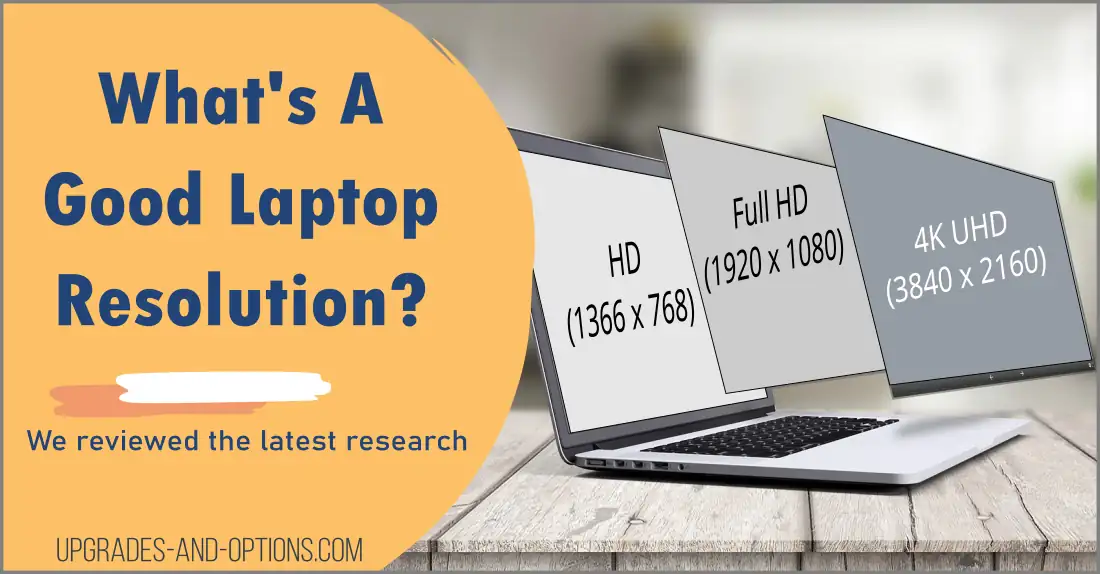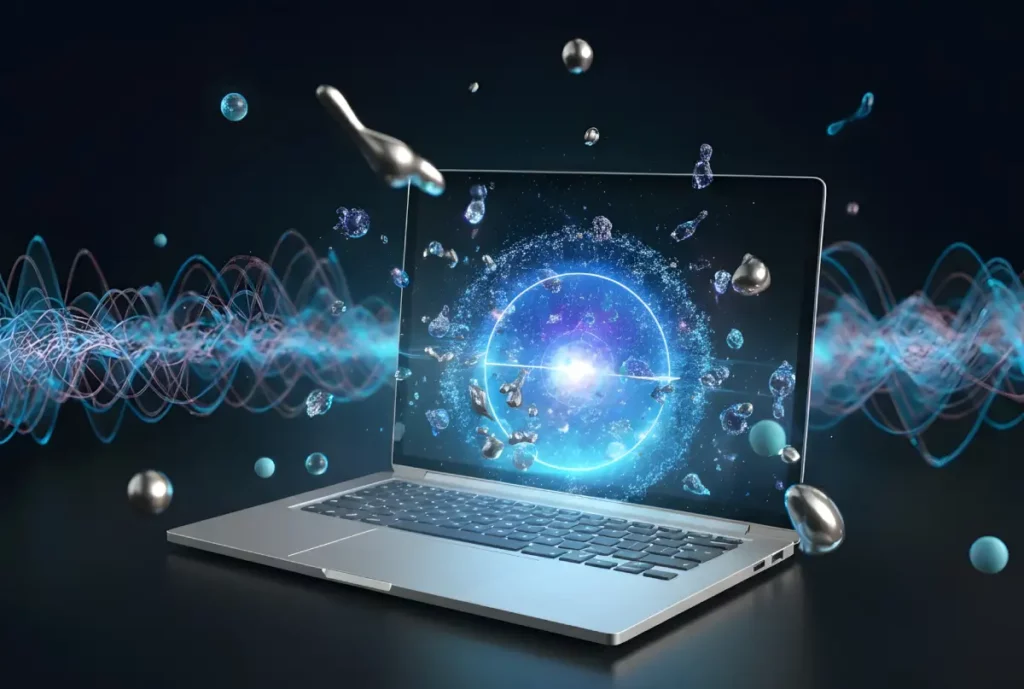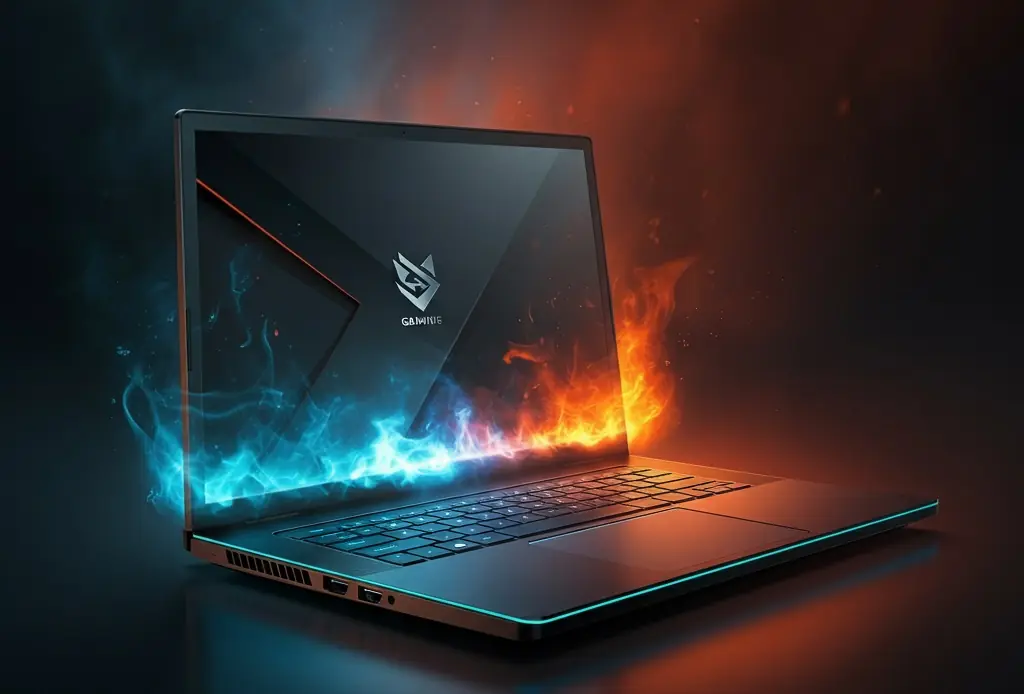With such a wide range of laptop resolutions available, it can be difficult to know what is best for you and your individual needs.
But what is the best laptop resolution? To find out, we tapped into the technology and reviewed the latest research.
updated: 6/29/2023
In this article, we cover everything you need to know about laptop resolution so you can make an informed decision when purchasing your next laptop.
My Advice: A good laptop resolution is a full HD (1920 x 1080) resolution. With this resolution, users can enjoy crystal-clear videos and pictures, play games at high settings without lag or choppiness, and have enough space to complete tasks that require more RAM or processing power. Full HD resolution also ensures you get the most out of the latest technologies and features available on today’s laptops.
Exploring the Different Laptop Display Resolutions
Laptops have been a staple in many of our lives for years now, but one element that often goes overlooked is their display resolution.
For those looking for a good laptop resolution, understanding the distinctions between each display resolution will help ensure you make the best choice for your needs.
Let’s explore the common display resolutions available and look into how they can impact users’ experiences.
VGA (640 x 480):
The most basic type of laptop resolution is VGA (Video Graphics Array). This resolution offers basic visuals with 640 horizontal pixels and 480 vertical pixels – resulting in an aspect ratio of 4:3.
While this resolution is adequate for basic web browsing and word processing tasks, users who want to watch videos or play games are likely to be disappointed with the limited clarity offered by this low resolution.
SVGA (800 x 600):
Developed in 1987, SVGA has an improved definition compared to VGA due to its 800×600 pixel configuration.
However, this resolution isn’t as good for viewing movies or playing games since its aspect ratio is still 4:3 – meaning you won’t get widescreen visuals on your screen.
WSVGA (1024 x 576):
WSVGA is a bit wider than SVGA because it has 1024 horizontal pixels versus 800 on SVGA.
It also comes with a slightly higher aspect ratio of 16:9 – making it perfect for watching movies or TV shows on laptops.
HD (1366 x 768):
High Definition displays are what you want in order to get the best visuals out of movies, TV shows, or games on your laptop.
High Definition displays offer 1366×768 pixels which provide wide-viewing angles with true color representation at a 16:9 aspect ratio for great movie-watching experiences.
However, HD resolution isn’t ideal for graphics-intensive tasks like 3D rendering & animation due to its relatively low pixel count compared to higher resolutions such as QXGA or WUXGA – but if you’re looking for something primarily used for web browsing & entertainment purposes then HD’s definitely the way to go.
UXGA (1600 x 1200):
These days, nearly all high-end laptops come with at least HD or UXGA resolution – but most users will opt for HD since it provides much better image quality without sacrificing performance benefits offered by lower resolutions like VGA or even WSVGA.
However, UXGA does have quite a bit more detail compared to HD since 1600×1200 is almost twice as much data when compared side by side.
Full HD (1920 x 1080):
When you buy a laptop that boasts “Full High Definition” capabilities – that means it has 1920×1080 pixels available which offer incredibly crisp visuals no matter what device you are using it on.
The aspect ratio here stands at 16:9 meaning perfect widescreen compatibility – making them great for watching movies/TV shows or even playing certain games that require more detailed textures & visuals than what can be provided by HD resolutions.
WUXGA (1920 x 1200):
WUXGA is even better than regular Full HD because it offers an increased number of vertical pixels along with full 1920×1200 support, thereby providing an even sharper picture than Full HD format can provide.
This kind of resolution is usually only seen on high-end devices such as gaming laptops or higher-end business or creative-oriented machines due to the high cost associated with its production process and material costs associated with having such high-resolution screens.
QXGA (2048 x 1536):
QXGAs offer an incredible level of clarity when viewing images or video work thanks to their 2048×1536 pixel configuration which allows them to create incredibly detailed, realistic images from start-up animations/visuals through all kinds of multimedia activities such as editing photos or videos plus gaming too.
4K UHD (3840 x 2160):
Finally, we have Ultra High Definition displays that boast 3840×2160 pixel configurations that rival professional-grade monitors found in post-production studios across the world – providing superior accuracy down to individual pixel levels when creating artwork and other visual works like 3D animation.
Laptops that can display these resolutions tend to be extremely expensive due to their specialized components & construction requirements needed in order to house this large amount of data and produce such pristine visuals.
A laptop will need a high-end display paired with a top-end graphics card.
And don’t forget about the Different Types of Laptops, which you can read about in my article.
So, Which One?
So which one should you choose?
Ultimately it depends on your specific needs as well as your budget.
Those who do graphic design work will definitely benefit from a 4K display as it offers unmatched levels of color accuracy and detail.
Whereas users who just want to browse the web or watch streaming videos can get by with HD-ready laptops.
My Advice: A good laptop resolution is a full HD (1920 x 1080) resolution. With this resolution, users can enjoy crystal-clear videos and pictures, play games at high settings without lag or choppiness, and have enough space to complete tasks that require more RAM or processing power. Full HD resolution also ensures you get the most out of the latest technologies and features available on today’s laptops.
Here is a full list of laptop display resolutions:
- VGA (640 x 480)
- SVGA (800 x 600)
- WSVGA (1024 x 576)
- HD (1366 x 768)
- UXGA (1600 x 1200)
- Full HD (1920 x 1080)
- WUXGA (1920 x 1200)
- QXGA (2048 x 1536)
- 4K UHD (3840 x 2160)
Why a good resolution matters
Having a good laptop resolution is essential for today’s tech-savvy user.
A high-resolution screen allows you to view more pixels per inch, meaning you get a sharper and more vibrant image quality. This helps when editing photos or videos, playing games, streaming movies and TV shows, or just browsing the internet.
A good resolution also enables users to multitask with ease as they can fit more windows on their screens at once.
Furthermore, when it comes to gaming and other graphics-intensive tasks, having a good resolution can make all the difference in performance.
What Is laptop resolution?
A laptop resolution can be defined as the number of pixels a laptop display consists of. This determines how sharp the picture on your screen will be, as the more pixels there are, the clearer and sharper the image will be.
The two most common laptop resolutions are 1366×768 and 1920×1080.
The main difference between these two resolutions lies in the number of pixels that each contains; 1366×768 has one million fewer pixels than Full HD at 1920×1080
- As a result of this difference, having a Full HD display will give you better image clarity and sharper details when viewing photos or videos on your laptop screen.
Other resolutions such as 3200×1800 (QHD) and 3840×2160 (4K) can also be found in more expensive laptops but may not always be necessary for everyday tasks like web browsing or word processing.
- These resolutions offer an even more detailed display than full HD with over 8 million pixels in 4K displays – however, they require powerful hardware to run smoothly on laptops.
Laptops can come in a range of sizes, from 11-inch netbooks to 17-inch gaming laptops. But how are laptops measured? Read my article for more.
Compatibility with external monitors
This article is about – What is a good laptop resolution, but also important is being able to match that resolution to a monitor.
Connecting an external monitor to a laptop can improve the user experience significantly.
It’s important to note that not all resolutions are compatible with all monitors, so it’s vital to check which resolution your laptop and monitor combination supports.
Generally speaking, a laptop with a full HD (1920 x 1080) resolution will be compatible with most external monitors, allowing you to enjoy the same sharp visuals on both displays.
Tip: It is important to check the specifications and compatibility of both the laptop and the display you plan on hooking up before making any purchases.
Of course, if one or both of your devices support more than Full HD resolutions, such as 4K or 8K, then you’ll be able to take advantage of those as well.
See my list of – Recommended Portable External Monitors. Portable monitors are not only portable and convenient but also great for multitasking.
Good Laptop Resolution Summary
When it comes to choosing the right laptop resolution for you, keep in mind what kind of tasks you plan on performing on it, as well as your budget.
Laptops with higher-end specs and resolutions tend to cost more than laptops with lower-end specs and resolutions.
Additionally, take into consideration any external monitors that may be used along with the laptop in order to make sure that everything will sync properly and look great when connected together.

J.S. is the owner, content creator, and editor at Upgrades-and-Options.com. I’ve worked in the IT and Computer Support field for over 20 years. The server hardware in my computer labs has mostly been IBM, but I’ve supported Dell, HP, and various other hardware. In addition, as part of my lab administrator responsibilities, I’ve learned, supported, and repaired/upgraded network hardware such as Cisco routers and switches. READ FULL BIO >>
More resources:
- How Quantum Computing Could Impact Everyday LaptopsQuantum computing may sound like science fiction, but its potential to revolutionize technology is very real. Unlike classical computing, which processes information using bits as 0s and 1s, quantum computing leverages the strange and exciting principles of quantum mechanics — like superposition and entanglement —… Read more: How Quantum Computing Could Impact Everyday Laptops
- What Is The Difference Between Lenovo’s Pens? (with Part Numbers)Do you ever find yourself writing with an old-school pen or even worse a pencil? As you pry your fingers off that last-century writing device, ask yourself if there isn’t a better way. Well ask no more, there is a whole world of digital pens… Read more: What Is The Difference Between Lenovo’s Pens? (with Part Numbers)
- How To Wipe A Hard Drive Clean: 4 easy stepsWipe it Clean: The Ultimate Guide to Erasing Your Hard Drive Safely and Effectively To wipe a hard drive clean, follow these 4 steps to securely and thoroughly delete all your data. Learn the different methods, tools, and tips to ensure a complete wiping of… Read more: How To Wipe A Hard Drive Clean: 4 easy steps
- Maximize Laptop Performance: Mastering OverclockingExploring Laptop Overclocking: My Personal Journey In an era where digital technology is at the heart of nearly all our activities, the performance of our laptops significantly impacts our productivity, gaming experience, creativity, and even our learning processes. Maximizing laptop performance isn’t just about getting… Read more: Maximize Laptop Performance: Mastering Overclocking
- Ultimate Guide to Gaming Laptop Heat ManagementImmediate Answer Gaming laptops naturally run hot due to their powerful components packed in a compact design. However, excessive heat can throttle performance, shorten the lifespan of your device, and even cause hardware failures. To manage heat effectively, ensure proper airflow, clean internal components regularly,… Read more: Ultimate Guide to Gaming Laptop Heat Management







